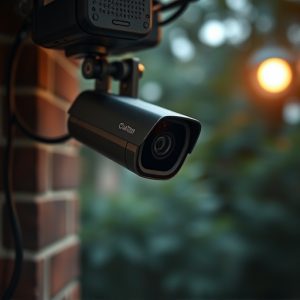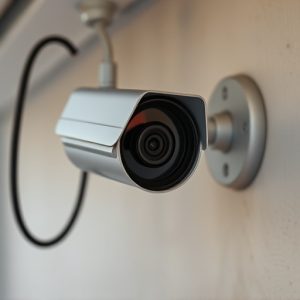Hidden Camera with Audio: Uncovering Next-Gen Surveillance Tech and Its Implications
Hidden cameras with audio capabilities have significantly advanced surveillance technology, providin…….
Hidden cameras with audio capabilities have significantly advanced surveillance technology, providing high-quality visual and auditory recordings that enhance the detailed documentation of incidents. These compact devices are crucial for capturing evidence simultaneously, which is especially important in ensuring compliance, safety, and legal verification. Their inconspicuous nature allows them to operate undetected, making them versatile tools used in residential security, professional investigations, and covert law enforcement activities. The integration of audio with visual data has made these cameras indispensable for comprehensive reporting and analysis, offering a more holistic understanding of events. As technology continues to advance, the functionality of hidden cameras with audio is expected to further evolve, ensuring they remain at the forefront of meeting surveillance demands while navigating privacy, legal, and ethical considerations responsibly. These advancements underscore the importance of such devices in maintaining security and professional standards across various sectors.
In an era where surveillance technology continues to advance, the integration of sound recording capabilities into hidden camera devices has marked a significant milestone. This article delves into the transformative impact of these multifaceted tools, known as hidden cameras with audio. We explore their burgeoning capabilities, the trajectory of their evolution from silent sentinels to comprehensive surveillance instruments, and the diverse applications that bring them into various environments. As we navigate through the technical advancements, it is imperative to consider the privacy implications, legal frameworks, and ethical dimensions of employing such devices. The hidden camera with audio is not just a technological marvel; it is a subject of rigorous debate surrounding its use and regulation. Join us as we unravel the complexities and convenes a discussion on how these tools are reshaping our understanding of privacy, security, and monitoring in the modern world.
Unveiling the Capabilities of Hidden Camera With Audio Technologies
The integration of audio capabilities in hidden camera technology has revolutionized the way we capture and analyze data. These discreet devices are now equipped with sophisticated microphones that can record high-quality sound, making them invaluable tools for surveillance, security, and investigative purposes. The synchronization of visual and auditory evidence provides a more comprehensive understanding of events as they unfold, offering clearer context and enhancing the credibility of the footage recorded. Users can now discern not just what is happening but also how it’s being done, which is particularly crucial in situations that require monitoring for compliance, safety, or legal documentation. The miniaturization of components has allowed these hidden camera with audio systems to be placed inconspicuously, ensuring that they remain undetected while capturing vital sound data. This advancement not only expands the functionality of hidden cameras but also ensures that the integrity of the surveillance is maintained without compromising the operation’s stealth nature. As a result, hidden camera with audio systems have become indispensable in various fields, from home security to covert law enforcement operations, where capturing both visual and auditory evidence is paramount for accurate incident reporting and analysis.
The Evolution of Spy Cameras: From Silent Sentinels to Sound-Enabled Surveillance Tools
In the realm of covert surveillance, the journey from silent sentinels to sound-enabled surveillance tools represents a significant leap in technological capability. Initially, hidden cameras were rudimentary devices designed to capture visual data discreetly without any audio recording feature. These early models were often limited in resolution and storage capacity but served as the foundation for more sophisticated technology. As technology advanced, the integration of audio capabilities into these compact devices became a game-changer. Today’s hidden camera with audio systems are far more than mere observers; they provide a multidimensional perspective on their surroundings. This advancement has been instrumental in enhancing the quality and comprehensiveness of surveillance, allowing users to capture both sight and sound for a clearer understanding of events as they unfold. The evolution of these devices from silent to vocal observers has expanded their utility across various fields, including home security, law enforcement, and investigative journalism, where capturing the full narrative is paramount.
The integration of audio into hidden cameras has not only revolutionized how we perceive covert surveillance but also how we interpret the data captured. Audio clips from hidden camera with audio systems can serve as critical evidence in legal proceedings, offering a tangible record that complements visual footage. This dual-recording functionality eliminates the need for separate devices to monitor sound, simplifying setups and reducing the risk of detection. The progression from silent to sound has been a testament to human ingenuity, showcasing our ability to adapt technology to meet evolving needs. As we continue to innovate, the future of hidden camera with audio systems promises even more advanced features, further blending into their environments while capturing the full sensory experience of targeted spaces.
Applications and Use Cases for Hidden Camera with Audio in Various Environments
Hidden cameras with audio capabilities have become indispensable tools across various sectors, offering a discreet yet comprehensive method of capturing both visual and auditory information. In the realm of security, these devices are invaluable for monitoring sensitive areas such as private residences, retail stores, or corporate offices to deter theft, vandalism, or unauthorized activities. The audio feature allows for a more thorough investigation by providing clear sound recordings that complement video footage, enabling better understanding and context of events.
Beyond security, the application of hidden cameras with audio extends into fields like healthcare and education. In medical facilities, these devices can be used to record patient-physician interactions, ensuring ethical standards are upheld and providing a reference for medical professionals to review later. Similarly, in educational environments, they can serve as an aid for faculty to assess their teaching methods or capture student presentations with both visual cues and spoken content for future study or review. Additionally, these multifunctional devices are increasingly used in the realm of entertainment and journalism to capture candid moments or conduct interviews where a more natural setting is preferred. The clarity of the audio recorded by such devices allows for high-quality sound that can be utilized in various media formats, enhancing the storytelling experience without compromising on subtlety or authenticity.
Privacy Implications, Legal Considerations, and Ethical Use of Hidden Cameras with Sound Recording
Hidden cameras equipped with audio recording capabilities have become increasingly prevalent in various settings, from personal security to professional surveillance. As these devices become more sophisticated and accessible, they raise significant privacy implications, legal considerations, and ethical questions. From a privacy perspective, individuals must navigate the boundaries of their right to privacy against the potential need for monitoring. Users of hidden cameras with audio must be cognizant of capturing sound without consent, as this can infringe upon individuals’ expectation of privacy, especially within private spaces.
Legally, the use of such devices is governed by a complex array of laws and regulations that vary by jurisdiction. These laws dictate where and how these cameras can be used, ensuring compliance with privacy laws such as GDPR in Europe or HIPAA in the United States. In some regions, it is illegal to record audio without the knowledge and consent of the parties involved, highlighting the importance of understanding the legal framework before deploying hidden camera systems with audio capabilities. Ethically, the use of these devices must be justified by a clear intention for public safety or security, rather than pure curiosity or voyeurism. The ethical deployment of hidden cameras with sound recording involves a careful consideration of the rights and expectations of all parties potentially captured within the audio range. It is imperative that users of such technology approach their use with a high degree of responsibility, transparency, and respect for privacy to mitigate potential misuse or abuse.


